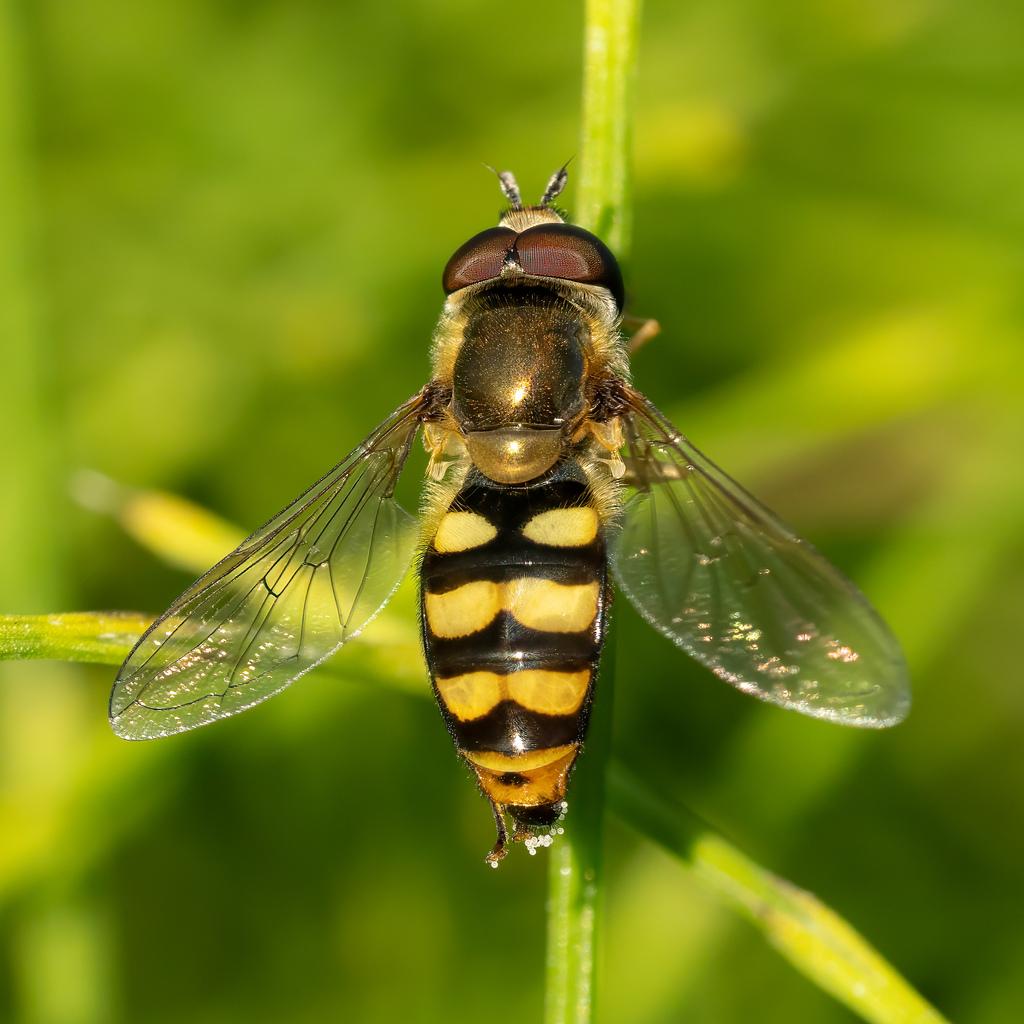Flower Fly
Adult hoverflies are .3-.6 in long with one set of transparent wings. As their name implies, you’ll often spot them hovering over flowers. They can be found on all continents except Antarctica.
Adult hoverflies feed on plant nectar and pollen. They are second only to bees in importance as pollinators of both crops and wildflowers, picking up and transferring pollen with the little hairs covering their bodies when they land on the flowers. They prefer open flowers where it’s easy to access the nectar. Unlike hummingbirds and hawk moths, adult hoverflies don’t pick up nectar and pollen while hovering.
Hoverfly larvae provide a valuable service as they are voracious eaters and often feast on plant-sucking insects. The females often lay their eggs in the middle of an aphid colony, providing a ready source of food for the larvae. A single larvae can eat up to 400 aphids during its developmental stage.
Could it be? Hoverflies are harmless to most mammals, although they sometimes mimic the appearance of stinging insects as a form of self-protection. Stinging insects such as bees have 2 sets of wings, while hoverflies only have one. Hoverflies have large eyes on the front of their head and short antennae, while bees have eyes on the sides of their head and longer antennae.
Did you know? Hoverflies may be looking for food sources, performing a male territorial display, or females may be looking for sites to lay their eggs while they hover.
See Also: Black Fly, Horse Fly, House Fly









